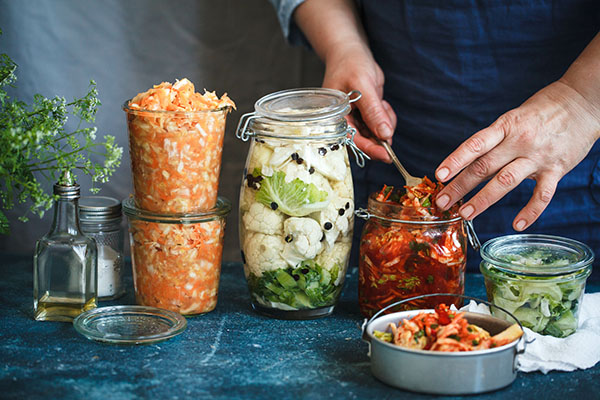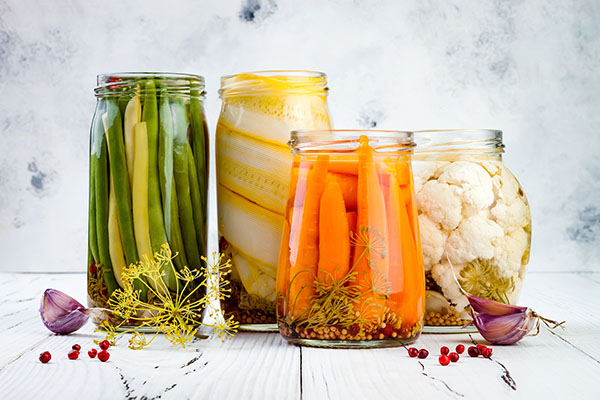
By using the proper food preservation techniques, you can keep your harvest fresh and edible, even without a refrigerator or freezer. (h/t to PreppersWill.com)
Food preservation methods
Note that even though refrigeration slows down spoilage, it doesn't halt it completely. Meanwhile, food preservation methods can actively inhibit bacterial growth and other decay processes, ensuring that food doesn't go to waste.
Dehydrating
Dehydration is a traditional food preservation method that uses the power of the sun to remove moisture from food and significantly extend its shelf life. This technique can also be used if you prefer convenient modern electric dehydrators.
While electric dehydrators offer a controlled environment, the basic principles remain the same when harnessing the power of the sun. If you want to save money, you can create a simple solar dehydrator using readily available materials. (Related: Why freeze-drying is the best food preservation method.)
For example, you can use wood frames with screens stretched taut to create a platform for the food to lie on. Place this dehydrator in direct sunlight for several hours so the sun’s heat can naturally dehydrate the food.
To dehydrate food successfully regardless of the method, you must make sure that the food is thoroughly dried. Properly dehydrated food will have a crisp texture.
This means that no moisture could cause spoilage.
Dehydrating is great for fruits and vegetables such as:
Home canning/bottling
Canning is another classic food preservation method that has stood the test of time.
While advancements in food science have resulted in the refinement of canning techniques, the core principle is the same: Using the method, you create a shelf-stable food product by destroying microorganisms that cause spoilage and sealing the food in airtight containers.
There are two main types of canning: Water bath canning and pressure canning.
Water bath canning is best for high-acid foods like fruits (applesauce, peaches and pears), some vegetables with added pickling liquid (pickles, relish) and certain condiments (BBQ sauce, jams and tomato sauce).
Using this canning technique, the filled jars are submerged in simmering water until they reach a temperature high enough to destroy harmful bacteria.
Meanwhile, pressure canning is best for low-acid foods like broths, dry beans, meats, vegetables and cooked dishes (baked beans, chili, soups and stews).
For pressure canning, you need a pressure canner that traps steam and raises the temperature above boiling, ensuring the safe preservation of low-acid foods.
While usually done on a stovetop, both water bath canning and pressure canning can be adapted for off-grid use. Keep in mind that you need a reliable heat source like a fire pit or BBQ and a way to accurately monitor the temperature throughout the canning process to ensure food safety.
Salting
As the name implies, you will need salt for salting various foods. Like dehydration, this technique actively extends the shelf life of food by drawing out moisture and inhibiting microbial growth.
The salting process involves the generous application of salt directly onto the food. You can do this by creating a thick salt rub or packing the food into a bed of coarse salt.
After the initial salting, the food must be placed in a cool area for an extended period, usually one month, to allow the dehydration process to take effect.
Once cured, the food is ready for cooking.
Alternatively, you can use a brine solution. You will need enough water to cover the food completely, and then slowly add salt while stirring until a layer of undissolved salt forms on the bottom.
The food is then submerged in the brine and stored in a cool location for a week or more, depending on the size and type of food.
Salting is a versatile technique that is best for meats, fruits, vegetables and eggs.
However, this method has several downsides, such as requiring a lot of salt and time. Additionally, the preserved food will have a higher sodium content, which might not be ideal for someone who has to monitor their sodium intake for health reasons.
Smoking
Smoking is a food preservation method that uses smoke to naturally extend the shelf life of various foods. This technique is best for meats, fish, fruits and vegetables.
There are two main types of smoking: Cold smoking and hot smoking.
With cold smoking, you need to keep the temperature below 100 F as the smoke slowly dries out the food within one to five days. This method typically requires additional preparation, such as curing meat with salt ahead of time or cooking it fully to prevent bacteria growth during the slow drying process.
If possible, use a smokehouse for cold smoking to keep the meat away from direct flames.
Hot smoking cooks the food at around 220 F. This method is quicker, but hot-smoked meats still require refrigeration after smoking.
For long-term storage, dehydrate the hot-smoked meat after the initial smoking process.
Smoking is versatile. You can choose this method if you prefer a certain smoker design and you can either purchase or make your smoker.
Alternatives to refrigeration
Here are some alternatives to refrigeration that you can try after SHTF.
Icebox or ice room
The icebox or ice room is a food preservation method that uses ice harvested during the winter months to keep food cool during the warmer seasons.
Iceboxes are well-insulated containers, often made of wood, that have a compartment for storing ice. The ice slowly melts, which provides a cool environment for the stored food.
Meanwhile, ice rooms are larger, often walk-in structures, that are built with thick walls and insulation to retain the cool air generated by all the stored ice.
Note that these methods require planning and a dedicated ice harvesting routine if you are looking for a reliable approach to off-grid cooling.
Root cellar
The root cellar is a traditional and highly effective off-grid cooling solution. These underground chambers utilize the natural insulating properties of the earth to maintain a cool, stable temperature year-round, which is ideal for storing different food items.
There are many guides online on how to construct different kinds of root cellars. Some need a hole dug in the ground, while others can be built using a closet in your home.
Root cellars offer a slightly cooler environment to store fruits and vegetables.
If you have the space and resources, you also have the option to build a root cellar or basement in your home. Use these structures for long-term food storage.
Zeer pot
A zeer pot is a traditional food preservation method that uses clay pots and evaporation for cooling.
To make a zeer pot at home, you will need two terracotta pots. Make sure one is slightly smaller than the other.
Place the smaller pot inside the larger one. Fill the gap between the two pots with sand. This sand will act as a heat sink, absorbing and retaining cool temperatures.
Keep the sand damp. As the water evaporates from the sand, it draws heat away from the inner pot, which creates a cooler environment.
Cover the larger pot with a terracotta lid, metal lid, or a damp cloth to minimize evaporation from within the pot itself.
The zeer pot should be kept in a shady area for optimal cooling effect. This method is best for fruits and vegetables. Note that the damp environment can attract insects, so you need a secure lid.
If you want to live off the grid and become self-sufficient, learn how to harvest and preserve food properly so you have access to a variety of food year-round.
Visit FoodStorage.news for more tips on proper food storage and preservation.
Watch the video below to learn about three ways to sterilize glass jars for home canning.
This video is from the Natural News channel on Brighteon.com.
More related stories:
Food preservation 101: A step-by-step guide to air-drying fruits.
Food preservation techniques used by different cultures around the world.
Prevent FOOD CONTAMINATION and food poisoning with these simple steps.
Sources include:
Please contact us for more information.






















